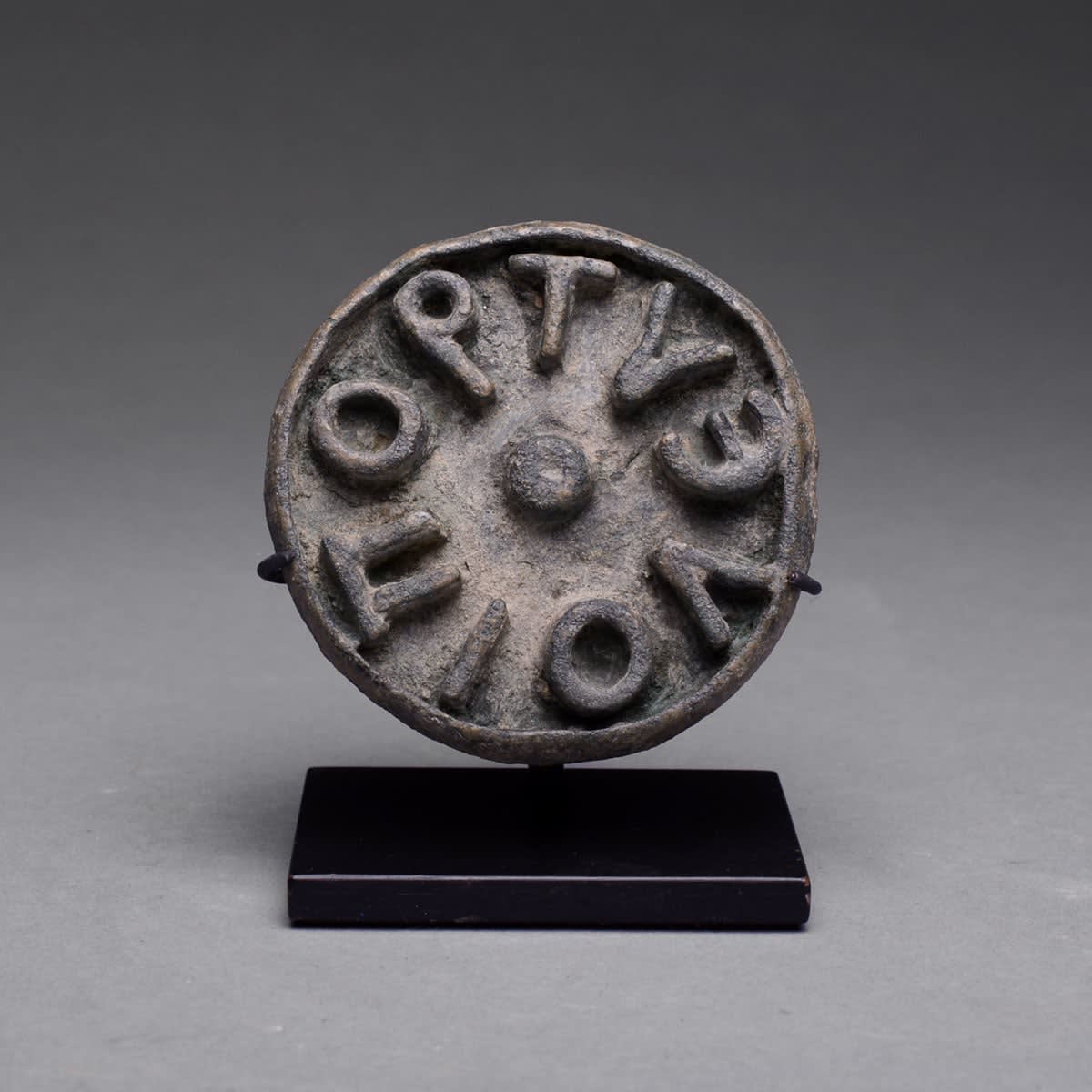Byzantine Bronze Circular Bread Stamp, 5th Century CE - 6th Century CE
Bronze
height 7 cm
height 2 3/4 in
height 2 3/4 in
X.0091
Further images
During the Roman era, bakeries were required to stamp their bread with an individual seal in order to trace the source of the loaves and to prevent fraud or theft...
During the Roman era, bakeries were required to stamp their bread with an individual seal in order to trace the source of the loaves and to prevent fraud or theft of imperial supplies. Upon the birth of the Byzantine Empire, bread stamps were still used, although their purpose had significantly changed. Although varying greatly in size and shape, the common characteristic of Byzantine bread stamps was the emphasis in drawing fracture lines that indicated to the priest where to cut the loaf. These lines become even more important on Eucharistic stamps that marked the consecrated bread for communion.
However, this circular bread stamp was likely used for more secular occasions as suggested by the inscription. The engraved name reads, “EUTROPIOU,” translated properly as, “belonging to Eutropios.” Surely the presence of an individual’s name makes it highly unlikely that this stamp would have marked the ritual bread utilized in the reenactment of the Eucharist. In fact, the legend seems to indicate this stamp might have more in common with its Roman predecessors than its Byzantine contemporaries.
Who was Eutropios and why did he have his own bread stamp? Was he a baker whose confections were well known and often imitated? Was he a restaurateur who demanded a great quantity of loaves each day? Perhaps he was a government official who provided bread to the needy or oversaw the dispensation of soldiers' rations? In any case, this bronze bread stamp is a historical record of baking in the Byzantine era that reiterates how essential the basic staples of existence are to leading a healthy life in any age.
However, this circular bread stamp was likely used for more secular occasions as suggested by the inscription. The engraved name reads, “EUTROPIOU,” translated properly as, “belonging to Eutropios.” Surely the presence of an individual’s name makes it highly unlikely that this stamp would have marked the ritual bread utilized in the reenactment of the Eucharist. In fact, the legend seems to indicate this stamp might have more in common with its Roman predecessors than its Byzantine contemporaries.
Who was Eutropios and why did he have his own bread stamp? Was he a baker whose confections were well known and often imitated? Was he a restaurateur who demanded a great quantity of loaves each day? Perhaps he was a government official who provided bread to the needy or oversaw the dispensation of soldiers' rations? In any case, this bronze bread stamp is a historical record of baking in the Byzantine era that reiterates how essential the basic staples of existence are to leading a healthy life in any age.







